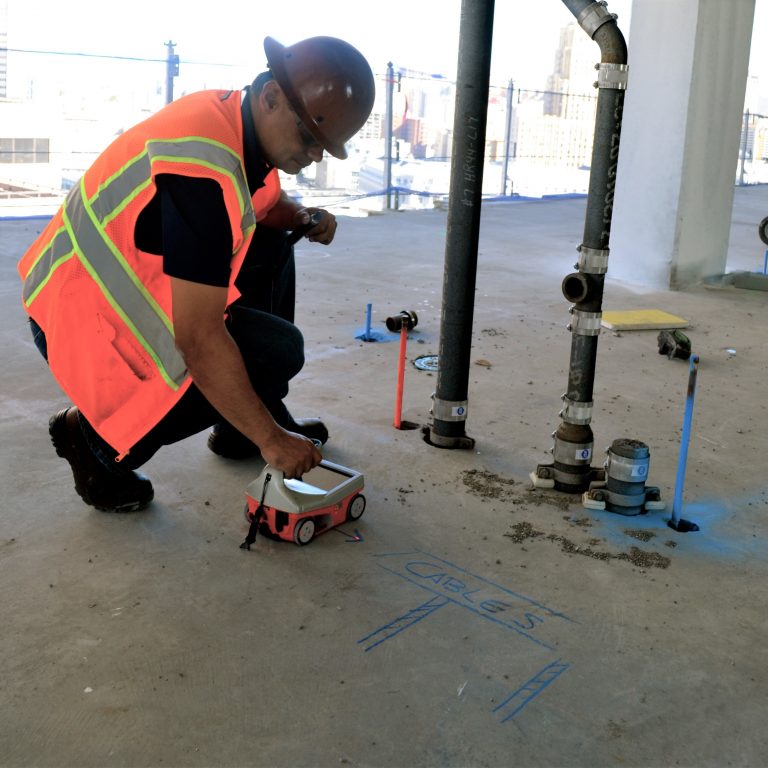Concrete Scanning: An Essential Step Towards Ensuring Architectural Stability and Safety
In the world of construction and infrastructure upkeep, the value of concrete scanning can not be overstated. By employing innovative technology and techniques, concrete scanning offers as an essential tool in guaranteeing that the honesty and safety of bridges and structures are maintained to the highest criteria.
Relevance of Concrete Scanning
Concrete scanning plays an important duty in making sure the structural integrity and security of structures and framework projects. By utilizing advanced technologies such as ground-penetrating radar (GPR) and electromagnetic induction, specialists can non-destructively examine concrete structures to find possible defects, spaces, ingrained items, and support design. This process makes it possible for early discovery of abnormalities that can jeopardize the security of a framework, stopping expensive problems and guaranteeing the safety and security of occupants.
Concrete scanning is especially necessary throughout the preparation and building and construction stages of a project. Prior to exploration, reducing, or coring right into concrete, scanning assists determine the accurate places of rebar, post-tension cables, and other ingrained aspects, lowering the threat of unintentional hits that might lead to architectural weak points. Additionally, concrete scanning help in quality assurance by validating the thickness of concrete covers and detecting any type of discrepancies that might affect the overall longevity of the framework. Inevitably, buying concrete scanning solutions is not just an aggressive measure to alleviate dangers but also a basic step in the direction of keeping the lasting safety and stability of buildings and facilities.
Technology for Concrete Assessment

Benefits of Very Early Detection
Prompt detection of structural problems can considerably minimize dangers and make certain the long life of building and construction jobs. By determining prospective issues early in the construction procedure, stakeholders can take positive procedures to attend to issues before they intensify right into larger and more costly troubles. One of the vital benefits of very early detection is the avoidance of architectural failures, which can position serious safety and security risks and result in task hold-ups and financial losses.
In addition, early discovery permits prompt repair services and maintenance, which can assist prolong the lifespan of the framework. By attending to issues immediately, building groups can stay clear of costly repair work or even the demand for premature replacement of architectural components. This proactive strategy not just conserves hop over to these guys time and money however also enhances the overall safety and resilience of the building and construction job.
In addition, early discovery can boost job preparation and decision-making by giving stakeholders with valuable understandings into the condition of the framework. Equipped with this info, job managers can make enlightened options pertaining to building approaches, products, page and timelines, leading to a lot more effective and reliable project end results.
Ensuring Architectural Stability
Making certain the architectural security of a building and construction project is extremely important to its safety and security and longevity. Structural security refers to the capacity of a building or framework to maintain its kind and feature under environmental problems and different tons. To accomplish this, detailed evaluation and tracking of the structure are important. Concrete scanning plays a vital role in guaranteeing architectural security by spotting possible issues such as gaps, delamination, or support corrosion that might endanger the integrity of the framework gradually.
By utilizing innovative scanning innovations like ground-penetrating radar (GPR) and electromagnetic induction, building professionals can non-invasively inspect concrete structures to determine areas of concern under the surface. This aggressive method allows for the early detection of weaknesses or defects, allowing prompt repairs or support to avoid structural failings.
Routine concrete scanning throughout different building phases and throughout the life cycle of a structure can help maintain its security, reduce threats, and make sure the safety of residents. By prioritizing structural security with concrete scanning, construction jobs can boost their strength and resilience, ultimately adding to greater safety and long life.
Avoiding Essential Failings
To guard against tragic occasions, thorough tracking and proactive maintenance are vital in preventing important failures within structural structures. Detecting his comment is here prospective problems prior to they rise is essential to stop structural failings. Applying routine evaluations, such as concrete scanning, can reveal surprise problems like spaces, cracks, or rust that can endanger the honesty of a structure. By using innovative scanning modern technologies like Ground Permeating Radar (GPR) or Concrete X-ray, engineers can non-destructively assess the condition of concrete and identify weak points that call for reinforcement or repair work - RainierGPR Service Areas.

Conclusion
Finally, concrete scanning plays an essential role in making sure structural integrity and safety and security by making use of advanced technology for early discovery of prospective issues. This aggressive approach assists stop essential failings and makes certain the stability of structures. It is vital to prioritize concrete inspection as a conventional practice to protect the durability and security of structures and facilities.
Concrete scanning plays an important function in making sure the architectural stability and safety of buildings and facilities projects. In addition, concrete scanning help in high quality control by confirming the thickness of concrete covers and detecting any kind of discrepancies that may impact the total toughness of the structure. Concrete scanning plays a critical function in making certain architectural stability by finding prospective issues such as gaps, delamination, or reinforcement corrosion that could jeopardize the integrity of the framework over time.

In verdict, concrete scanning plays a crucial role in making sure architectural honesty and safety and security by making use of sophisticated modern technology for very early detection of potential issues.